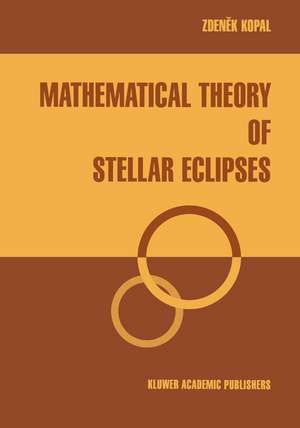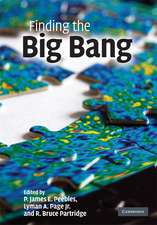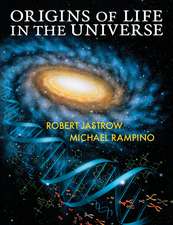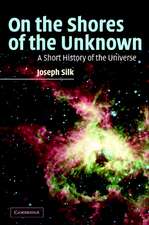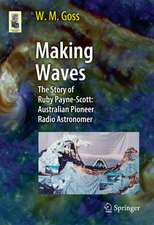Mathematical Theory of Stellar Eclipses
Autor Zdenek Kopalen Limba Engleză Paperback – 8 oct 2011
Preț: 382.36 lei
Nou
Puncte Express: 574
Preț estimativ în valută:
73.16€ • 76.59$ • 60.54£
73.16€ • 76.59$ • 60.54£
Carte tipărită la comandă
Livrare economică 07-21 aprilie
Preluare comenzi: 021 569.72.76
Specificații
ISBN-13: 9789401067294
ISBN-10: 9401067295
Pagini: 172
Ilustrații: 172 p.
Dimensiuni: 170 x 244 x 9 mm
Greutate: 0.28 kg
Ediția:Softcover reprint of the original 1st ed. 1990
Editura: SPRINGER NETHERLANDS
Colecția Springer
Locul publicării:Dordrecht, Netherlands
ISBN-10: 9401067295
Pagini: 172
Ilustrații: 172 p.
Dimensiuni: 170 x 244 x 9 mm
Greutate: 0.28 kg
Ediția:Softcover reprint of the original 1st ed. 1990
Editura: SPRINGER NETHERLANDS
Colecția Springer
Locul publicării:Dordrecht, Netherlands
Public țintă
ResearchCuprins
List of Contents.- I. Introduction.- II. Light Changes Due to Eclipses of Spherical Stars.- II.1 Loss of Light: Eclipse Functions.- II.2 Recursion Properties of Eclipse Functions.- II.3 Differential Properties of Eclipse Functions.- II.4 Bibliographical Notes.- III. Loss of Light as Integral Transforms.- III.1 Beam Cross-Correlation: Fourier Transform.- III.2 Hankel Transforms and Their Evaluation.- III.3 Differential Properties of Hankel Transforms.- III.4 Fourier Transforms and Their Inversion.- III.5 Radial Velocities: Rotational Effect.- III.6 Bibliographical Notes.- IV. Theoretical Photometry of Distorted Eclipsing Systems.- IV.1 Theoretical Light Changes: Transformation of Coordinates.- IV.2 Effects Arising from Distortion of the Eclipsing Star.- IV.3 Effects Arising from Distortion of the Eclipsed Star.- IV.4 Eclipses of Oscillating Stars.- IV.5 Bibliographical Notes.- V. Inverse Problem: Solution for Elements of the Eclipses.- V.1 Moments of the Light Curves: Spherical Case.- V.2 Moments of the Light Curves: General Properties.- V.3 Inversion of the Moments: Spherical Stars.- V.4 Moments of the Light Curves: Determination from the Observations.- V.5 Bibliographical Notes.- VI. Inverse Problem for Distorted Eclipsing Systems.- VI.1 Variation of Light between Eclipses.- VI.2 Modulation of the Light Curves.- VI.3 Photometric Perturbations Arising from Distortion of the Eclipsing Star.- VI.4 Effects Caused by Distortion of the Star Undergoing Eclipse.- VI.5 Bibliographical Notes.- VII. Laboratory Simulations.- VII.1 Analog Computers: Will Digital Computation Survive?.- References.
